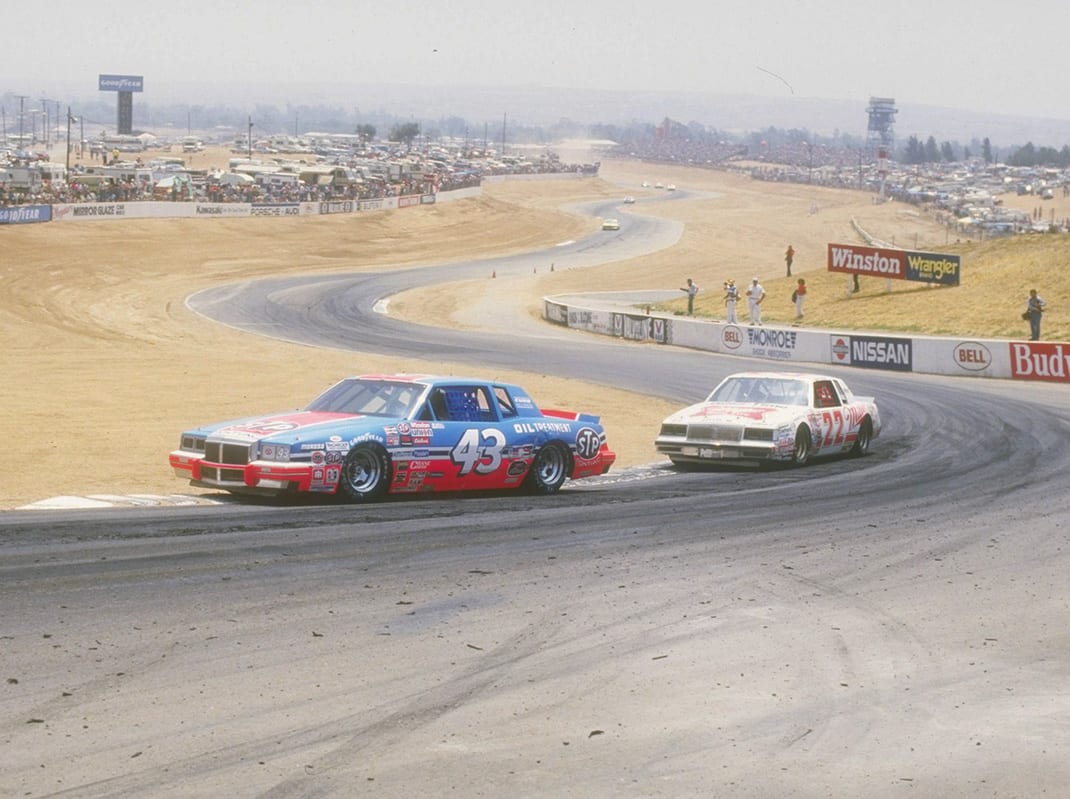For NASCAR fans during the 1970s and ’80s, news from California’s Riverside Int’l Raceway in January meant a new season was soon to begin.
That season-opening tradition on the famed Southern California road course spanned 23 years, from 1958 through 1981, before NASCAR moved the start of the season to the Daytona 500 at Daytona Int’l Speedway in 1982.
Known originally as Riverside Int’l Motor Raceway, it was where auto racing’s best road course drivers showcased their incredible talents.
RIR was in operation from Sept. 22, 1957, to July 2, 1989, with Rusty Wallace winning the last NASCAR race there.
Car clubs used a shortened version of the circuit for a year while bulldozers and construction equipment began tearing away structures and service roads. The famed raceway met its demise in favor of development, including upscale housing developments and commercial real estate.
The 520-acre tract of land is where many international racing series competed on three main configurations — the long course of 3.27 miles, the short course of 2.5 miles and the NASCAR course of 2.62 miles.
The track was built by the West Coast Automotive Testing Corp., headed by former European racer Rudy Cleye, in 1957.
Money woes followed until industrialist John Edgar bankrolled the operation. In 1960, oilman Ed Pauley, investor Fred Levy and comedian Bob Hope bought control of the raceway property for an estimated $800,000, and shortly afterward hired retired football star Les Richter to run it.

In 1969, American Raceways Inc. obtained nearly half of the track’s stock for $1.25 million. Two years later, a four-man group headed by Riverside attorney and land developer Fritz Duda acquired 80 percent of the stock for $400,000. When funding for a new track in another location fell through in 1984, Duda announced he would build a shopping mall on the property and the Moreno Valley Mall at Towngate opened in 1992.
Looking back, the first NASCAR event at RIR was run on June 1, 1958, and won by Eddie Gray, who led 43 of 190 laps on the 2.62-mile road course equating to 499 miles.
NASCAR returned to the track in May 1961 with Lloyd Dane winning an event that spanned 39 laps to complete a 100-mile distance. Dan Gurney won there in 1963, as did Darel Dieringer in November of that year. Gurney added three additional NASCAR victories at Riverside between January 1964 and January 1966, while driving for Wood Brothers Racing. He collected a fifth NASCAR victory there for the Woods in 1968.
Fans in attendance during those races knew they were seeing history made.
“We were successful with several drivers there at Riverside,” said Leonard Wood, crew chief for many of those victories. “I liked that road course better than any other. It had a fast backstretch and I loved to see the drivers go through the esses. It was a fun race track to race on.
“As far as Dan Gurney, he knew road racing and that’s why he was so good,” Wood noted. “He was very serious about his racing. Some would say he looked like he was on a Sunday drive. He would respond, ‘But you don’t know how hard it is to make it look that way.’ He knew he had to discipline himself to back off in the right places. I think he was the best road racer there ever was.”
Click below to continue reading.
